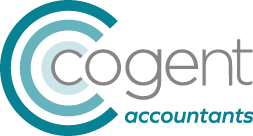Changes to the Flat Rate Scheme
There has been lots of coverage in the UK press about changes that are taking place to the Flat Rate Scheme (FRS) on 1st April.
The change has made many contractors (who operate via their own limited company) question if they should stay in the scheme, or if they will be better off leaving the scheme.
Our team has been working hard giving our clients advice on this. We thought we would share with you this straightforward flowchart that shows if you should consider staying in the Flat Rate Scheme, or if you may be better off leaving it.
This post also includes a brief background on why Flat Rate Scheme is changing.
Reason for the change
The Flat Rate Scheme was introduced to simplify the process that businesses with an expected turnover of less than £150,000 use to calculate the amount of VAT that they have to pay to HMRC. At present, users ignore VAT incurred on purchases when reporting VAT payable, with the exception of capital items costing £2,000 or more. Users only need to multiply the gross turnover (including VAT charged at the normal rates) by the FRS percentage set for the particular trade sector of their business.
HMRC became aware that some businesses were setting up composite companies to abuse the Flat Rate Scheme for monetary gains.
From 1st April 2017, a new 16.5% rate will be introduced for businesses with limited costs, such as businesses providing services. Businesses will now be required to determine if they are a ‘limited cost trader’ by completing a simple test. If their business, matches the criteria set out for a ‘limited cost trader’ they will have to use the 16.5%, instead of the percentage they previously used as outlined in HMRC’s trade sector list, commonly 12% or 14.5%.
What is a limited cost trader?
A limited cost trader is defined as one that spends less than 2% of its VAT inclusive turnover on relevant goods (and not services such as Accountancy fees) during a VAT period or £1,000 per annum (pro rata for the duration of the VAT period).
When working out the amount spent on goods, it cannot include purchases of:
- capital expenditure (such as new equipment used in a business)
- food and drink
- vehicles or parts for vehicles including fuel and mileage
- good that you intend to re-sell or hire out
- gifts or promotional items
Examples of Relevant Goods include:
- stationary and office supplies exclusively for the business
- gas and electricity exclusively for the business
- book, magazines – hard copies
- software on a physical disc
Please note these are not exhaustive lists.
Flat Rate Scheme Flowchart
The flowchart is intended to give you an overview of your position in relation to the Flat Rate Scheme. It is imperative that you seek advice from an experienced team of contractor accountants to assist you in making your decision. Get in touch with us on 020 8952 2234 and speak to a highly qualified team member.
You can download a pdf version of the flowchart here.


